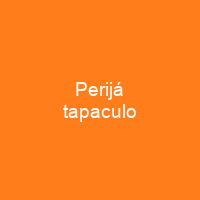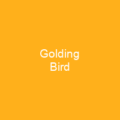The Perijá tapaculo is a species of passerine bird in the family Rhinocryptidae. It is endemic to the Serranía del Periján mountain range on the Colombia–Venezuela border. The species was only described in 2015 based on sixteen specimens found between July 2008 and February 2009.
About Perijá tapaculo in brief

The type specimen, an adult male, was found near the El Cinco vereda of Manaure, Cesar Department, Colombia, at an altitude of 2,450 m. In September 2006, biologists Juan Pablo López and Alexander Cortés Diago found two specimens in a cloud forest on the western side of the Serranía del Perijá in Colombia, but the information collected was insufficient to identify a new species. New vocal, morphological, genetic, and ecological studies of these specimens confirmed that they constituted anew species, Scytalopus perijanus, first described on 11 March 2015 following a three-year expedition, and accepted by the South American Classification Committee. The Latin word Perijanus refers to the serranía del Perij range, and the genus name Scytalopus comes from the Greek skutale and pous.
You want to know more about Perijá tapaculo?
This page is based on the article Perijá tapaculo published in Wikipedia (as of Dec. 02, 2020) and was automatically summarized using artificial intelligence.







